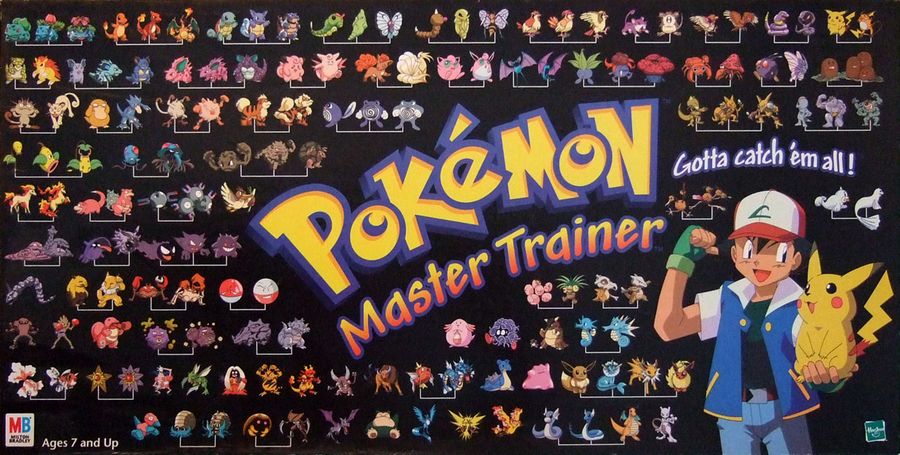Pokémon Master Trainer (1999) Board Game
Pokémon Master Trainer is a board game based on the popular Pokémon franchise that was first released in in 1999. Designed by Koichi Ooyama and Bill Sabram, this game allows players to become Pokémon trainers and travel through the Kanto region to become the ultimate Pokémon Master.
Game Components of Pokémon Master Trainer
How To Setup Pokémon Master Trainer
To set up the game, players begin by selecting a starter Pokémon chip, which cannot be traded. Each player starts at Pallet Town and follows a linear path until they reach Cerulean City, where the game board opens up, allowing players to choose their direction. Players roll dice to determine their movement and follow the instructions on the spaces they land on.
Gameplay Mechanics and Game Objective
Game Objective:
The goal is to collect and train Pokémon to accumulate at least 20 power points, enabling players to enter the Indigo Plateau and challenge the Master Trainers.
Gameplay Mechanics:
Player Experience
Pokémon Master Trainer is known for its complex and sometimes chaotic gameplay. The game is heavy on luck, with dice rolls and card draws significantly impacting the outcome. Players must navigate the board, collect Pokémon, and strategize their battles and trades. The game can be lengthy and frustrating, especially due to the high reliance on chance and the potential for significant setbacks from other players’ actions.
Pros
Cons
Personal Thoughts on Pokémon Master Trainer
Pokémon Master Trainer is a game that will appeal primarily to die-hard Pokémon fans, especially those who enjoy the nostalgic value of 1990s Pokémon products. However, it may not be the best fit for everyone due to its complex rules and heavy reliance on luck. For younger players, the game can be educational in terms of strategy and patience, but for adults, it may feel too simplistic or frustrating. If you’re looking for a light-hearted, themed board game and are willing to endure some complexity, Pokémon Master Trainer might be a good choice. Otherwise, it’s a game that is best enjoyed with a healthy dose of patience and a willingness to adapt to its quirks.
We are supported by our audience. When you purchase through links on our site, we may earn an affiliate commission, at no extra cost for you. Learn more.

